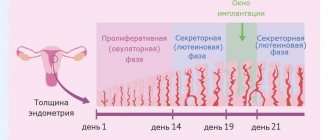Vesiculitis is a urogenital disease of the genitourinary system, in which inflammation of the seminal vesicles occurs. As a rule, it has an infectious etiology. The second name for this pathology is spermatocystitis. It can develop as an independent disease, but is most often combined with pathologies such as epididymitis, prostatitis and various inflammatory diseases of the urethra.
In the absence of appropriate treatment, serious consequences can occur, including infertility in the patient. The acute form of the disease responds well to treatment without causing serious health consequences (in case of early detection and comprehensive treatment). With chronic vesiculitis, the prognosis is not so favorable: approximately 60% of patients suffering from the bacterial or cognitive form of this disease have serious problems with reproductive function and disorders in the intimate area.
Why does the disease develop?
There are a number of main reasons why vesiculitis develops:
- Infectious agent. In most cases, the causative agents of the disease include coccal flora, Escherichia coli, and an infection that is sexually transmitted.
- Congestion. Blood stagnates in the pelvic organs. The development of venous stagnation is associated with an active sexual life, masturbation, and artificial prolongation of sexual intercourse. Blood also stagnates in the pelvic organs due to the lack of regular ejaculation.
- The seminal vesicles are injured. The cause of injury is various diagnostic procedures. This includes cystourethroscopy, transurethral resection, bougienage, etc.
- Congenital developmental anomaly. An aseptic inflammatory process in the seminal vesicles can develop due to the fact that sperm or urine comes into contact with the tissues of the vesicles. The reason for such contact is congenital reflux or ductal atresia. Such anatomical defects can cause the development of vesiculitis in a child. The disease is characterized by a persistent course, resistance to antibacterial drugs, and unilateral damage.
Prevention methods
The occurrence of this pathology can be prevented if basic preventive measures are followed. First of all, we are talking about timely detection and treatment of sexually transmitted infections.
In addition, it is important to eliminate provoking factors from your life, as well as make certain adjustments:
- Try to have a regular intimate life. It is important to always use contraception.
- When working sedentarily, you need to take breaks more often. During them, you can do simple exercises, or just walk around. Remember that your vacation should be active, and not sitting at the computer. In this case, even regular walking around the city will be useful.
- Eliminate fast food, too fatty and salty foods from your diet. It is better to eat more vegetables, fruits, and drink enough liquid.
- Eliminate or limit the consumption of alcoholic beverages. It is better to quit smoking altogether.
- You need to avoid too frequent masturbation, stress, etc.
Detection of the disease at an early stage is an important condition for successful treatment. If you allow the disease to enter the chronic stage, then there is a high probability of developing infertility and problems in the intimate sphere.
Why does the secretion stagnate in the seminal vesicles?
There are a number of factors that cause venous and secretory stagnation:
- There is no regular sex life.
- The man masturbates frequently.
- Sexual intercourse is often interrupted.
- There is no intimacy for a long time.
- Inferior ejaculation, which occurs due to a stressful situation during sexual intercourse.
- If a man abuses alcohol and smokes a lot.
- Frequent hypothermia of the body.
- Maintaining a sedentary lifestyle.
- Sedentary work.
- Enlarged hemorrhoidal veins.
Mechanism of disease development
With infectious vesiculitis, an inflammatory process develops due to bacteria, viruses, and fungi. The outflow of urine becomes difficult and the vesicles swell. Due to constant urinary retention, urethral-seminal reflux appears and the infectious process worsens.
In addition, the ejaculate produced decreases in quantity. The cause is impaired contractile function of the vesicles. There is an abundant blood supply to the vesicles, the inflamed vessels become less elastic and can rupture during ejaculation, when pressure increases in the pelvic cavity.
Aseptic vesiculitis is characterized by narrowing of the lumen of blood vessels, venous congestion, and increased vascular permeability. Due to such processes, ischemia of the pelvic organs and vesicles develops. It is a proven fact that the inflammatory process provokes a decrease in testosterone levels and an increase in prolactin levels. As a result, the secretory activity of the vesicles deteriorates.
Aseptic inflammation causes disruption of the contractile function of the seminal vesicles, which is the cause of early ejaculation, spontaneous erection, and nocturnal emission. Any type of inflammatory process causes disturbances in spermatodynamics and the formation of infertility.
Types of disease
Vesicles can be affected unilaterally or bilaterally. The disease also has acute and chronic forms. Vesiculitis is classified taking into account the severity of the inflammatory process. To determine this indicator, an endoscopic examination, or vesiculoscopy, is performed.
The disease happens:
- Catarrhal. With a superficial inflammatory process, the mucous membrane turns red, and fluid is released into the tissue from small blood vessels. In addition, there is a slight increase in vesicles and the presence of inhomogeneous liquid in them. Such fluid can determine the presence of protein, red blood cells, and leukocytes.
- Deep. With this form of the disease, the inflammatory process spreads from the mucous membranes to the underlying layer. The seminal vesicles enlarge, they swell and turn red. The contents of the blisters include pus.
- Common. The inflammatory process is present in neighboring tissues that are in close proximity to the seminal vesicle.
List of sources
- Svetlova L.N. Mechanisms of persistence of pathogenic microflora in chronic prostate-vesiculitis in infertile men / L.N. Svetlova, Yu.V. Vasiliev, NH Martynovich // Bulletin. VSSC SB RAMS. - 2009. - No. 2. - P. 64-66.
- Borodina N.M., Merkulov V.I., Zakharova E.B., Tyutyunnik I.V., Kukurekin Yu.V. Features of the treatment of chronic prostate vesiculitis // Collection of scientific works. Issue 6 (102): Kiev-Lugansk. — 2010 r. - pp. 271-280.
- Inflammatory diseases of the accessory sex glands in men, caused by latent urogenital infection and complicated by infertility. Abstract of the dissertation/ Kalinina S.N. – 2003.
- Pathogenetic mechanisms of development of chronic prostate-vesiculitis in infertile men. Abstract of the dissertation/ Svetlova L.N. – 2009.
- Vasiliev Yu.V. A method for increasing the effectiveness of eradication of urogenital flora / Yu.V. Vasiliev, L.N. Svetlova // Men's health: materials of the 3rd All-Russian. conf.: Sat. abstract - M., 2006. - P. 180-182.
How does the disease manifest itself?
Acute vesiculitis is characterized by the following symptoms:
- Painful sensations in the groin, which can be transmitted to the sacrum.
- Even with bilateral damage to the seminal vesicles, pain is felt only on one side.
- A full bladder or bowel movement causes pain.
- Ejaculation is accompanied by pain.
- Semen may contain blood.
- General symptoms: body temperature rises, headaches often occur, general condition worsens.
The chronic form is characterized by symptoms associated with impaired urination and sexual function. Namely:
- Erection and ejaculation cause pain to a man.
- Painful sensations can last for about several hours after the end of sexual intercourse.
- The quality of orgasm decreases.
- Involuntary ejaculation may occur.
- Aching painful sensations are localized in the sacrum.
- Urination may be difficult, painful, or frequent.
Chronic vesiculitis can occur without any symptoms, and a man will contact a specialist if he notices that the semen contains blood.
Other possible signs of vesiculitis include pyuria (when there is pus in the urine) and pyospermia (when there is pus in the semen). There is also a decrease in sperm count, which in turn leads to male infertility.
Diet
Diet for prostatitis
- Efficacy: therapeutic effect after 21 days
- Time frame: 3 months
- Cost of food: 1380-1450 rubles per week
There is no diet directly for vesiculitis, however, given that in the vast majority of cases, vesiculitis occurs in the form of prostate-vesiculitis, patients can be prescribed a diet for prostatitis , which is an important component of complex treatment. The diet is based on the general principles of rational nutrition.
In the acute period, preference in the diet should be given to a dairy-vegetable diet (cottage cheese, kefir, yogurt, fermented baked milk, soft cheese, cereals, vegetables and fruits), limiting (excluding) from the diet foods that irritate the prostate gland - sausages, strong meat broths , hot spices, sauces (ketchup, mayonnaise), eggs, hard cheese, smoked meats, strong coffee/tea, all fried/fatty foods, spicy vegetables (horseradish root, radish, daikon, radish, onion, garlic, ginger), pickles/ marinades, alcohol-containing drinks (especially beer), fast food, carbonated drinks, limit salt and sugar intake to 8-10 g/day. The diet should include low-fat boiled/baked fish, poultry and rabbit meat, beef, potatoes, cereals, baked apples, vegetable/fruit purees, fruit/vegetable juices.
Of the fats in the diet, preference should be given to fats of vegetable origin (sunflower, olive, flaxseed, corn oil), excluding any refractory animal fats. To normalize bowel movements/prevent constipation , the diet should include foods rich in fiber (bran, grain bread, whole grain porridge, fresh vegetables/fruits, wholemeal products). Plums/prunes, beets, and fresh apricots contribute to normalization.
It is useful to include natural biostimulants in the diet (bee products - honey, propolis, pollen, beebread, royal jelly), Manchurian aralia, aloe extract, Schisandra chinensis, echinacea, eleutherococcus, mumiyo, elecampane, as well as products containing zinc - oysters, seafood, lean red meat, dry yeast, herring, wheat bran, pumpkin seeds, sesame seeds; selenium (lard, seaweed, brewer's yeast, offal, wholemeal flour, rice, buckwheat, bran) and vitamin E (sprouted wheat oil, green peas, corn oil, chicken eggs, parsley).
Compliance with the drinking regime is also important. Non-carbonated mineral waters, freshly prepared fruit drinks, herbal teas, juices, compotes are recommended, however, in the presence of dysuric disorders, fluid consumption in the second half of the day must be limited.
Routes of infection
Penetration of microorganisms into the seminal vesicles can occur in the following ways:
1. By hematogenous route. If there is an infectious focus in the body, bacteria are introduced into the seminal vesicles through the bloodstream. This happens with tonsillitis, caries, sinusitis, pneumonia. In such a situation, the provoking factor of vesiculitis is streptococcus, staphylococcus, mycobacterium tuberculosis and others.
2. Lymphogenous route. Penetration of infection occurs through the lymph flow from a nearby organ. Pathogens include Proteus and Pseudomonas aeruginosa.
3. Ascending way. The inflammatory process moves along the mucous membranes of the urinary tract. In this way, sexually transmitted infections, as well as E. coli, spread.
General information
Vesiculitis (synonymous with spermatocystitis ) is a urological disease in men, manifested by inflammation of the seminal vesicles. The seminal vesicles are a paired glandular organ of the male reproductive system, which is a twisted spiral 2-4 cm wide, 5-7 cm long and up to 1 cm thick. The seminal vesicles have a body and a neck, which turns into ducts. The anterior part of the organ is adjacent to the bladder, and the posterior part is directly adjacent to the vesico-rectal septum. (picture below).
The main function of this organ is to produce part of the secretion (seminal fluid) that is part of the sperm.
The juice of the seminal vesicles contains protein fluid, which provides nutrition and motility for sperm. If ejaculation fails, the remaining seminal fluid is utilized by spermiophages in vesicles.
Vesiculitis in men develops primarily as a complication of various chronic diseases of the genitourinary system ( urethritis , prostatitis , orchitis , epididymitis ). It has been established that in patients diagnosed with prostatitis, inflammation of the seminal vesicles is diagnosed in 80% of cases, that is, in clinical practice, vesiculitis is more often found in the form of prostate-vesiculitis . Much less common is primary vesiculitis, which occurs against the background of a general infectious disease ( tonsillitis / flu ) or the infectious agent migrates by lymphatic/hematogenous route from chronic foci of pathogenic microflora (chronic tonsillitis , caries ). Acute and chronic vesiculitis can occur in men of any age, but people of active reproductive age (20-40 years) are most often affected.
The increase in diseases of the genitourinary organs in men of inflammatory origin is due to many factors: promiscuity, increased sexual activity of young people, increased migration of the population, material insecurity, urbanization, immunodeficiency, self-medication, resistance to many antimicrobial agents, which has significantly changed the epidemiology of these diseases.
In general, late diagnosis, chronic course and lack of adequate timely treatment quickly lead to a pronounced decrease in potency and impaired fertility . Aggravating factors are not always diagnosed vesiculitis against the background of chronic prostatitis , as well as self-medication with antibiotics, which leads to difficulty in treating patients due to increased resistance of microorganisms.
What processes occur in the seminal vesicles
The mucous membrane increases, the lumen of the vesicles narrows. In the acute form of the disease, the mucous membrane in the vas deferens swells, resulting in a disruption of the outflow of the contents of the seminal vesicles. If the inflammatory process is present for a long time, epithelial cells will grow and the mucous membrane will thicken. In addition, there is an increase in the volume of the gland and its swelling.
Connective tissue grows. It replaces those cells that secreted the secretion. As a result, the secretory function of the vesicles is disrupted.
The glandular epithelium atrophies. It is responsible for producing the secretion of the seminal vesicles. Sperm becomes more viscous, and the required amount of organic matter, due to which sperm are viable, decreases.
The outer shell atrophies. This happens if the inflammatory process develops deep in the seminal vesicles. During orgasm, the secretion of the seminal vesicles is squeezed out with a special plate. If such a plate is affected, the gland becomes overfilled, resulting in an increase in its size. When the secretion stagnates, suppuration occurs.
What is done to make a diagnosis
To establish a diagnosis, a urologist performs a rectal examination, prescribes general blood and urine tests, culture of seminal vesicle secretions, and analyzes ultrasound results.
If you notice any symptoms or have any sensations that bother you, consult a doctor immediately. Health problems are easier to treat the earlier they are detected.
You can make an appointment with a doctor by phone in Moscow: +7 (495) 601–15–15 or here. you can see the doctor here.
How is the disease diagnosed?
To determine vesiculitis, men can prescribe a number of diagnostic methods.
Conducting a rectal examination.
It is a basic diagnostic measure with the help of which a diagnosis is made. The man is asked to sit on a chair/stool. To carry out a diagnostic procedure, the doctor uses the index finger. If the seminal vesicles are inflamed, a spindle-shaped painful formation can be felt, which is located above the prostate gland.
The secretion of the seminal vesicle is examined
Catheterization of the bladder is performed. It is washed. After this, a sterile isotonic solution is placed in it. Why is the seminal vesicles massaged? This procedure is followed by emptying the bladder.
What method can be used to detect a jelly-like mass (sperm + pus + blood). Microscopic examination of urine helps to determine a large number of leukocytes, erythrocytes, and bacteria. Sperm can change their shape.
Carrying out vesiculography
It is a traditional diagnostic method used to determine diseases of the seminal vesicles. Vesiculography is performed to exclude tuberculosis or sarcoma of the seminal vesicles. A contrast solution is injected into the vas deferens. A special needle or tube is used for this. An incision is first made in the scrotum. This is followed by the release of the vas deferens. When a contrast solution has been administered, an x-ray is ordered.
If there is an inflammatory process in the seminal vesicles, an x-ray will show that they have increased significantly in size, the walls have become thicker, and the inner and outer surfaces have changed their relief.
Carrying out an ultrasound examination
It is a non-invasive diagnostic method, during which sound waves are reflected and detailed information is obtained about what structural changes have occurred in the organ. Thanks to ultrasound examination, it is possible to determine how enlarged and deformed the seminal vesicles are.
Carrying out a computed tomography
It is a modern diagnostic method that provides a clear and complete picture of the changes that have occurred in the organ under study. Computed tomography differs from other methods by its higher cost.
Laboratory research
A man who comes to the medical center is prescribed a general blood test. Based on the results of this analysis, leukocytes and erythrocyte sedimentation rate are determined.
A general urine test can identify leukocytes, blood, and bacteria that are present in it.
A spermogram helps identify leukocytes, erythrocytes, and microorganisms. In addition, with the help of such an analysis it is possible to determine whether there has been a change in sperm, their number, or whether the level of fructose has decreased.
Tests and diagnostics
The list of studies to establish a diagnosis includes the following diagnostic (physical, instrumental and laboratory studies):
- Finger-rectal test (enlarged blisters, dense, painful).
- TRUS/CT.
- Vesiculography.
- Microscopic/bacteriological examination of the secretion of the seminal vesicles.
- PCR analysis for STIs.
- General blood/urine test.
- PSA blood test.
- Spermogram.
Differential diagnosis is carried out with prostatitis , urethritis , tuberculous lesions , primary cysts and tumors , as well as secondary metastasis into the vesicles of prostate cancer and other pelvic neoplasms.
How to treat vesiculitis
The etiological factor, the severity of the inflammatory process, and concomitant pathology are factors on which the scheme of therapeutic measures depends. If purulent inflammation is present, treatment begins immediately, even without receiving laboratory test results. Treatment consists of drugs and physiotherapeutic procedures that affect all components of the disease: inflammation, poor circulation, immunosuppression.
Drug treatment consists of taking a broad-spectrum antibacterial agent, immunomodulators, and enzymes. Taking non-steroidal anti-inflammatory drugs enhances the effect of the antibacterial drug. In addition, the patient’s pain decreases and the temperature reaction normalizes. To improve blood circulation, a man may be prescribed phlebotonics. If an obstructive disorder is present, alpha blockers are prescribed.
Physiotherapeutic treatment. Thanks to physiotherapy, medications are concentrated in the inflammatory focus, resulting in reduced swelling and pain, and improved microcirculation. This effect is achieved after using magnetic laser exposure, UHF, transrectal electrophoresis with an antibacterial drug and an anesthetic.
Visit to the sanatorium. 8-10 weeks after the acute phase of the disease has been stopped, the man can undergo rehabilitation in a sanatorium. For complete recovery, the use of applications and mud tampons in the rectum is prescribed. In addition, they will massage the prostate gland and give a microenema with a decoction of one or another herb. If you consume mineral water in the required quantity, diuresis will increase and the elimination of pathogenic microorganisms will accelerate.
Treatment methods
Treatment of this pathology depends on the specific cause that caused the inflammation. If the pathology is infectious in nature, then antibacterial therapy is prescribed. In case of stagnation, the doctor prescribes drugs that eliminate these stagnation.
As a rule, in case of an infectious factor, the following are prescribed:
- Antibiotics to which microflora is sensitive
- Sulfonamides
- Nitrofurans
If the cause is stagnation, then the following are prescribed:
- Angioprotectors
- Physiotherapeutic procedures
- UHF therapy
- Massage the area of inflammation
Vesiculitis is accompanied by pain of varying degrees of intensity, so it is important not only to treat the root cause of the disease, but also to eliminate the accompanying symptoms. As a rule, non-steroidal anti-inflammatory drugs are prescribed, which not only relieve pain, but also reduce the inflammatory process.
The administration of immunomodulators allows you to strengthen the body’s general defense mechanisms, which will help you cope with the infection faster. In addition, they reduce the risk of relapse.









